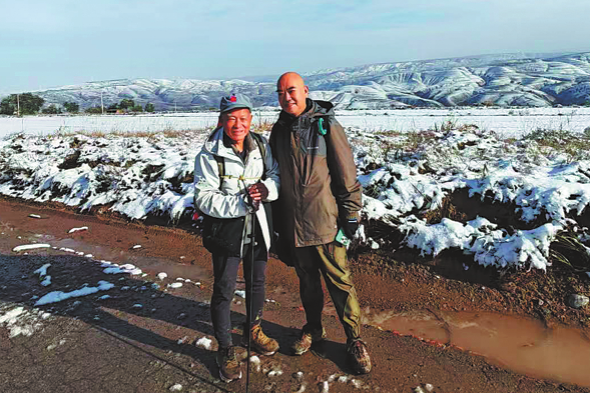Chinese researchers shed light on preventing 'invisible killer' among rural elderly

HARBIN -- A study by China's Harbin Medical University has found that incorporating simplified exercise training and tailored health education into the country's basic public health services can significantly reduce fall risks among rural elderly, tackling the "invisible killer" affecting the senior population.
The study was published online this week in the Journal of the American Medical Association. The findings support the use of a primary health care integrated approach to prevent falls among the elderly in rural China and other low-and middle-income countries.
Though easily neglected, falls have ranked among the leading causes of accidental injuries and deaths in the elderly over the past three decades, said Tian Maoyi, vice dean of the university's School of Public Health and one of the lead researchers of the study, noting that China now boasts a considerable size of population aged 60 and above.
To address this problem, the research team developed a comprehensive intervention project led by village doctors that included simplified exercises targeting lower limb muscle strength and balance, as well as health education videos narrated in local dialects.
In partnership with disease control and prevention centers and medical colleges across multiple provinces, the team conducted a randomized controlled trial involving 2,610 participants aged 60 and above who were at high risk of falling.
Wang Yongchen, head of general medicine at the Second Affiliated Hospital of Harbin Medical University, who was also part of the study, said that the intervention project showed marked effectiveness over an average follow-up period of 358 days.
He added that only 29.7 percent of participants in the intervention group reported at least one fall, substantially lower than the 38.3 percent in the control group. The fall incidence rate also decreased from 1.4 falls per person per year in the control group to 0.8 in the intervention group, while the injury rate dropped from 21.6 to 15.2 percent.
The elderly participants who received the intervention also experienced significant improvements in functional mobility and health-related quality of life, Wang said.
He explained that the study employs an approach that utilizes China's existing primary healthcare network without depending on high-end medical equipment or specialized rehabilitation physicians. This method could provide a practical healthcare solution for elderly populations in resource-constrained countries and regions.
"For hundreds of millions of rural elders, fewer falls means less suffering and greater opportunities of living independently and enjoying life," Wang said.
- Top court urges stricter regulation of minors' online behavior
- Ministry issues new work injury insurance guide
- New guidelines safeguard seniors' prepaid care fees
- Changzhou trials upgraded 'cloud bus' system for rural mobility
- Black-necked cranes return to Guizhou's Caohai reserve for winter
- Top political advisor calls for sound formulation of 2026 consultation plan





































